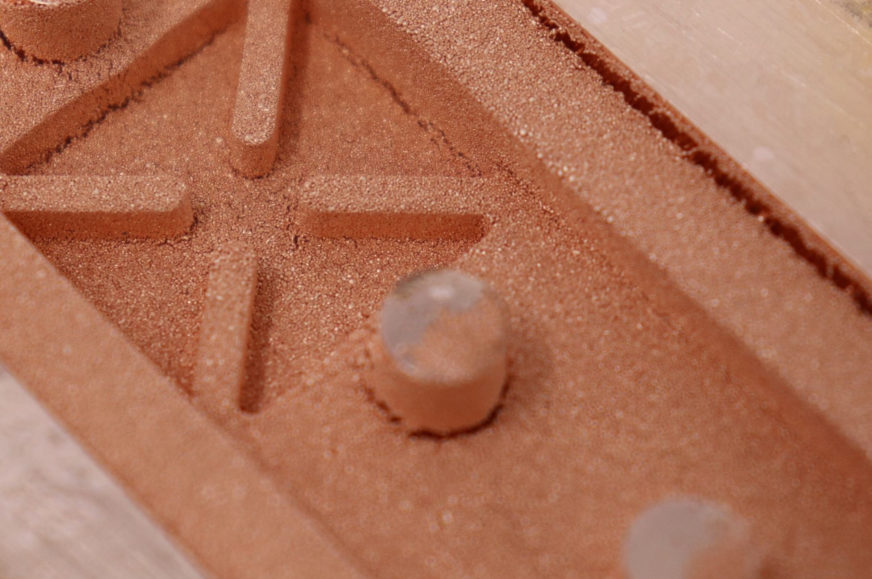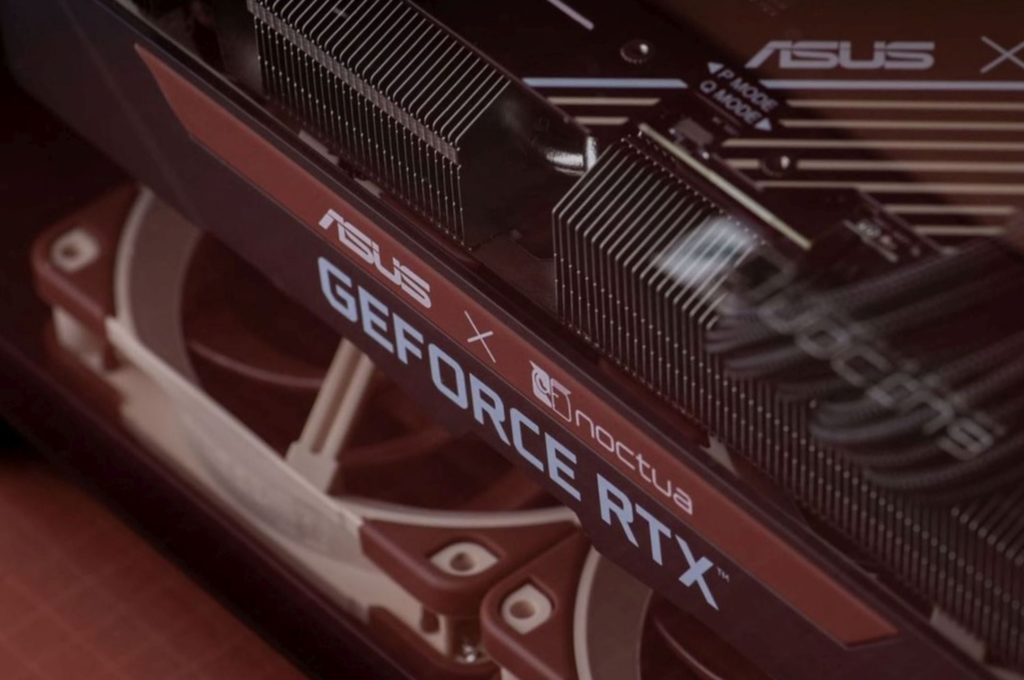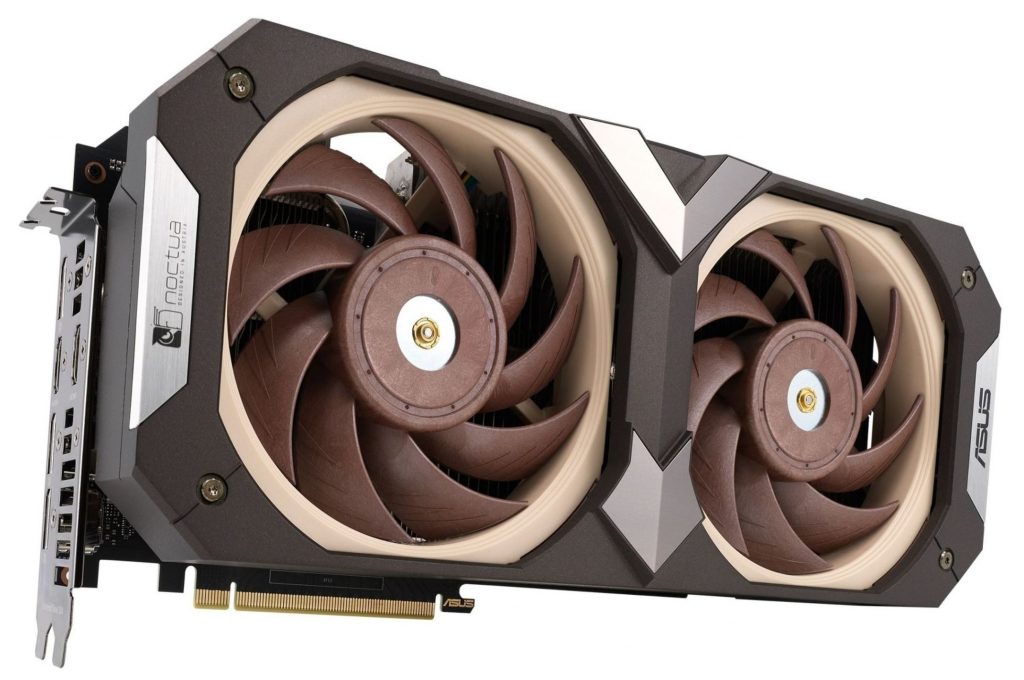Asus GeForce RTX 4080 Noctua OC Edition
Just before the end of last year, we wrote about Noctua’s involvement in the development of Asus RTX 4000 graphics card. Now we know for sure that there will be an RTX4080-O16G-Noctua model. While at first glance this card’s cooler will be the same as the last one, it is supposed to be significantly more effective with the implementation of a vapor chamber, which Noctua has never used before, not even with their own CPU coolers.
Same visuals, completely different functioning. That’s what Noctua had to say to us, very briefly, about what to expect from the new RTX 4000 series graphics cards (Ada Lovelace) they worked on with Asus.
In our last article, where we guessed what these graphics cards might look like, we were a little off on one thing. The record length won’t be achieved, at least as far as the RTX 4080 is concerned, which will definitely come out sooner (than the eventual RTX 4090, which we don’t know much about). Instead of making the heatsink bigger and adding a third fan, Noctua has taken other steps to make the cooler more effective. Namely, it used a vapor chamber for the first time ever within its coolers, and eight heatpipes. The former is in place of the traditional (full, copper) base.
The base of the cooler will contain a liquid medium that will be subject to condensation. This should ensure that the absorbed heat in the base will be distributed substantially more evenly and will also be transferred in greater intensity to the outermost heat pipes. As a consequence, the surface area of the heatsink fins into which these pipes conduct heat will also be used more efficiently. But this is only a theory for the time being, which must be backed up by precise design. Our experience with coolers that are built on a vapor chamber is rather controversial. Whether it’s CPU coolers Sapphire Vapor-X, Cooler Master V8 GTS or the cooler on the Gigabyte Aorus RTX 3080 Xtreme 10G graphics card. What all of these coolers have in common is that, given their weight and radiating area of the heatsink, they have a poorer cooling power-to-noise ratio than traditional designs with a full, all-coppper base. However, this does not mean that it is necessarily an imperfect technology, only that it requires more precise implementation. Compared to a monolithic block to which heatpipes are soldered, it is a more complex system. In terms of temperatures, a maximum of 61.7 °C is officially quoted in addition to a very quiet operation (we assume a fully loaded graphics card, i.e. at a power draw of around 320 W).
Given that Noctua goes into more detail than other companies when it comes to coolers and fans (and publishes detailed internal tests upon release), it’s hard to imagine that a vapor chamber heatsink would be inferior to a design with a traditional base. This is rather unlikely based on Noctua’s work to date, and at the same time it is commendable that instead of increasing the dimensions, the effectiveness of the heatsink is increased for the same dimensions. Whether the vapor chamber will later make its way into Noctua CPU coolers is unclear at this time. However, the drive to make the most of Noctua’s development of cooler bases with this technology will definitely be there.
As mentioned in the introduction, the outer shell shouldn’t change too much and the dimensions will be unchanged. It will probably be a 4.3-slot graphics card (with 87.5 mm in height) that is 310 mm long. Paradoxically, compared to other RTX 4080 graphics cards, this design will be a bit shorter. The fans remain the 120mm Noctua NF-A12x25, in a pair. Their brown and beige variants will be used. When exactly the RTX4080-O16G-Noctua will go on sale we don’t know, but Noctua’s press release with all the technical details won’t keep you waiting for long.
English translation and edit by Jozef Dudáš













